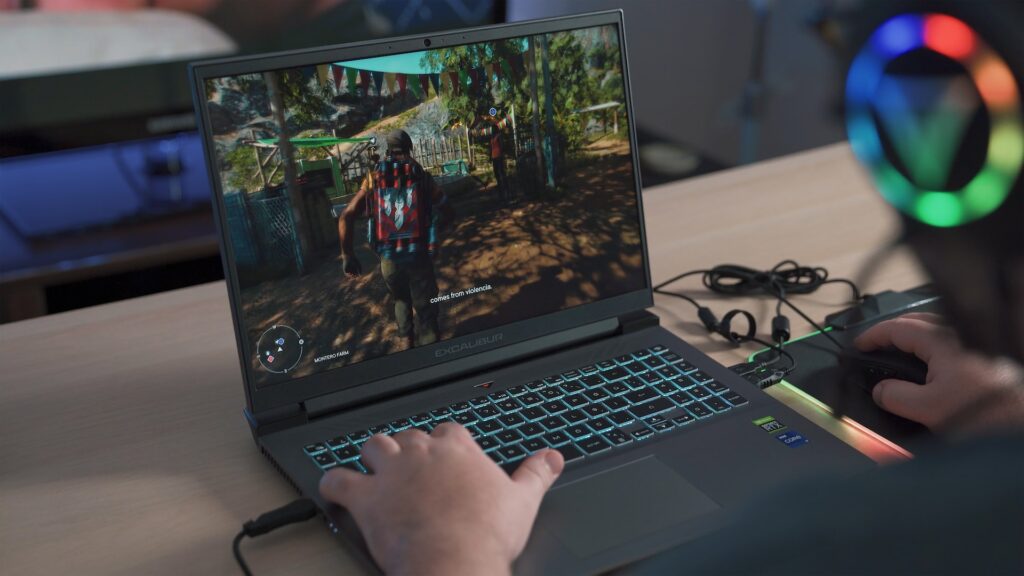Video games have come a long way since the first pixelated games of the 1970s and 80s. Over the past few decades, the video game industry has seen a significant evolution in graphics, which has transformed the gaming experience for players around the world.
From 8-bit graphics to photo-realistic visuals, the evolution of video game graphics is a fascinating journey that has captivated players of all ages. In this blog post, we will explore the evolution of video game graphics and how it has shaped the industry.
Pixelated Graphics

In the early days of video gaming, the technology of the time limited the graphics. The first video games were created using simple graphics composed of pixels, which are small squares that make up an image on a screen. These pixels were often visible to the naked eye, and the graphics were blocky and rudimentary.
The iconic arcade game Space Invaders, which was released in 1978, is an excellent example of pixelated graphics. The game was composed of simple, two-dimensional images of aliens and spaceships that moved across the screen. The graphics were minimal, but the game was still incredibly popular, with its unique gameplay and simple controls.
As technology improved, so did the graphics in video games. Developers began to experiment with different visual styles, creating more complex and detailed graphics that pushed the limits of the available hardware.
2D Graphics

In the 1980s and early 90s, 2D graphics became the standard for video games. These graphics were composed of flat images that gave the illusion of depth through layering and parallax scrolling. Games like Super Mario Bros. and Sonic the Hedgehog were some of the most popular games of this era, and they utilized 2D graphics to create immersive and engaging gameplay experiences.
The 16-bit era, which began in the late 80s and lasted until the mid-90s, significantly improved 2D graphics. The increased power of consoles like the Super Nintendo and Sega Genesis allowed for more detailed sprites and backgrounds, creating a more immersive and visually appealing gaming experience.
3D Graphics

The mid-90s marked a turning point in video game graphics with the introduction of 3D graphics. This allowed for the creation of fully three-dimensional environments that players could explore. Games like Super Mario 64 and Tomb Raider were some of the first games to utilize 3D graphics. They were incredibly successful due to their groundbreaking visuals.
3D graphics allowed for a new level of immersion in video games and opened up new game design possibilities. Games like Grand Theft Auto and The Sims were able to create fully-realized virtual worlds that players could explore and interact with in ways that were not possible with 2D graphics.
Introducing 3D graphics also led to the development of new technology and hardware. Tech producers created graphics cards and consoles with more advanced processing capabilities to handle the demands of 3D graphics. This led to the development of more complex and visually stunning games, which continues to this day.
Photo-Realistic Graphics

The latest generation of video game graphics has brought us photo-realistic visuals. These visuals blur the lines between reality and virtual reality. Games like The Last of Us Part II and Red Dead Redemption 2 utilize advanced graphics engines to create lifelike characters and environments that are almost indistinguishable from real life.
The development of photo-realistic graphics has been made possible by advancements in technology like ray tracing, which simulates the behavior of light in a virtual environment, and real-time rendering, which allows for the creation of complex, dynamic environments in real time.
The evolution of video game graphics has been a remarkable journey that has seen the video game industry go from simple, pixelated images to photo-realistic visuals that push the limits of what is possible in the virtual world. It has improved the visual quality of games and expanded the possibilities of game design and storytelling.
Advancements in graphics have enabled game developers to create more immersive and engaging worlds that players can explore and interact with. Modern video games’ level of detail and realism has made it possible to create more complex and emotionally engaging narratives. Players can now experience video games as if they are watching a movie. Complete with lifelike characters and environments that draw them into the story.
Advancements in graphics technology made the rise of virtual reality (VR) possible. VR allows players to fully immerse themselves in a virtual world, while AR brings virtual elements into the real world. Both of these technologies require highly detailed and realistic graphics to create believable virtual environments, and they have the potential to revolutionize the gaming industry even further.
Conclusion
The evolution of video game graphics has been a remarkable journey. It has seen the industry go from simple, pixelated images to photo-realistic visuals. It pushes the limits of what is possible in the virtual world. As technology continues to improve, we can expect even more breathtaking visuals and immersive experiences in the future.
The advancements in graphics technology have improved the visual quality of games and expanded the possibilities of game design and storytelling. With the rise of VR and AR, we can expect even more innovative and engaging gaming experiences that will blur the lines between reality and virtual reality.
Video games have come a long way since the early days of pixelated graphics, and the future of the industry looks bright. We can’t wait to see what the next evolution of video game graphics will bring.
